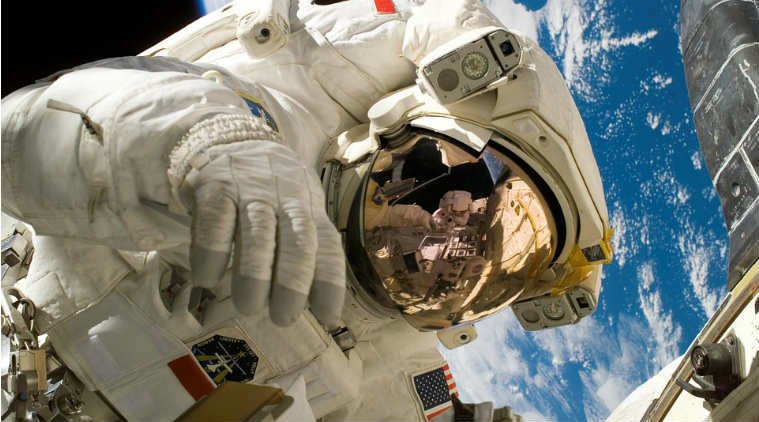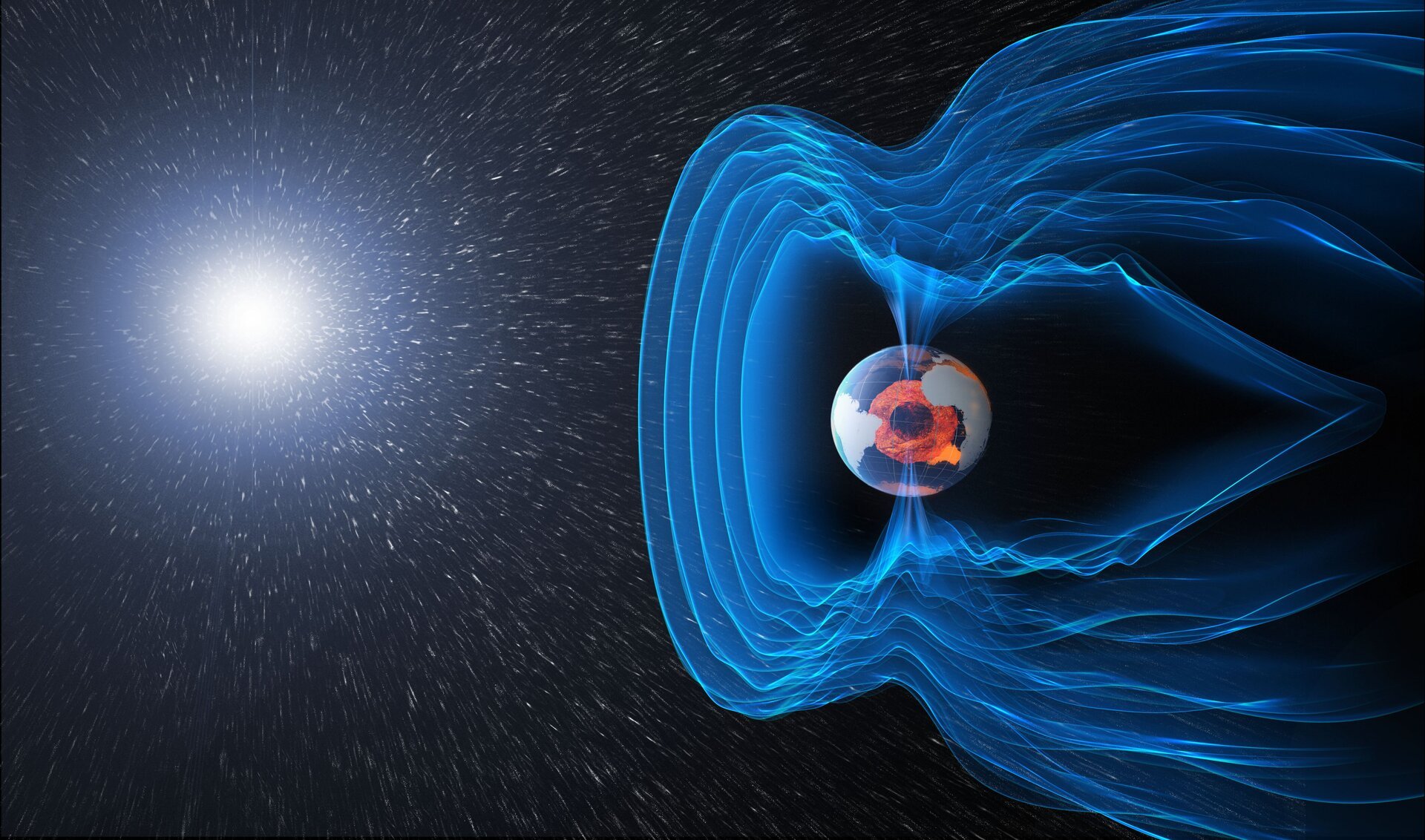Space exploration is one of humanity’s biggest achievements. However, going beyond Earth comes with many challenges. Many people think about mechanical failures, isolation, and weightlessness. But one of the biggest dangers for astronauts is space radiation exposure.
Space provides little protection from high-energy radiation. In contrast, Earth’s atmosphere and magnetic field shield it from such dangers. Protecting astronauts from cosmic rays is a key challenge for long missions to the Moon, Mars, and beyond. Long exposure to radiation can cause serious health issues. These include cancer, brain problems, and harm to important organs.
As space agencies and private companies get ready for interplanetary travel, understanding space radiation is key. Astronauts face health risks from radiation. We must explore these risks and the new tech aimed at cutting exposure.
Understanding Space Radiation
What is Space Radiation?
Space radiation is vastly different from the types of radiation we experience on Earth. On our planet, the atmosphere and magnetosphere shield us from most harmful radiation. However, in space, astronauts are exposed to:
- Galactic Cosmic Rays (GCRs): High-energy particles originating from outside our solar system, mostly composed of protons and heavier ions. These particles travel at nearly the speed of light and can penetrate most materials, making them extremely dangerous.
- Solar Particle Events (SPEs): Bursts of radiation from the Sun, typically occurring during solar flares and coronal mass ejections. These events release large amounts of protons and can cause acute radiation exposure in astronauts outside of protective shielding.
- Trapped Radiation Belts: The Van Allen Belts around Earth contain charged particles that can pose a threat to spacecraft and astronauts passing through them.
Each of these radiation sources presents a unique risk, and understanding them is crucial for protecting astronauts from cosmic rays on long-duration spaceflights.
How Space Radiation Affects the Human Body
The health risks of space travel due to radiation are extensive and vary depending on exposure duration and intensity. The primary dangers include:
- Increased Cancer Risk: Radiation damages DNA, leading to mutations that can result in various forms of cancer. Studies on astronauts show that prolonged exposure to cosmic rays increases the likelihood of developing cancer later in life.
- Central Nervous System Damage: Research suggests that prolonged exposure to cosmic rays can impair cognitive functions, affecting memory, reaction time, and decision-making. Some studies indicate that space radiation could accelerate neurodegenerative diseases like Alzheimer’s.
- Cardiovascular Disease: Radiation can damage blood vessels, increasing the risk of heart disease and stroke. Astronauts exposed to high levels of cosmic radiation show signs of early cardiovascular aging.
- Acute Radiation Syndrome (ARS): High doses of radiation, particularly from solar flares, can cause nausea, vomiting, skin burns, and even death in extreme cases.
- Compromised Immune System: Continuous radiation exposure can weaken the immune system, making astronauts more susceptible to infections and slower wound healing.
With missions to Mars expected to last up to three years, these risks become even more concerning. Deep-space travelers face high-energy radiation. Unlike the International Space Station (ISS), they lack Earth-based protection and a magnetic field.
Strategies for Protecting Astronauts from Cosmic Rays

Shielding Technologies
To ensure the safety of astronauts, researchers are developing advanced shielding methods to mitigate space radiation exposure. Some of the most promising approaches include:
- Passive Shielding: This involves using materials such as polyethylene, water, or special alloys. These materials help absorb radiation and lower exposure. Water, in particular, is effective because hydrogen-rich materials are good at slowing down high-energy particles.
- Active Shielding: Creating electromagnetic fields to deflect charged particles, like Earth’s magnetosphere. This concept, while still in early development, could provide dynamic radiation protection for deep-space missions.
- Habitat Design: Position key workstations and sleeping areas in the safest parts of the spacecraft. Use onboard materials to boost protection. Spacecraft may incorporate walls lined with water tanks or other radiation-absorbing materials.
- Lava Tubes on the Moon and Mars: Future missions might use natural underground spaces to shield against radiation. These structures could serve as bases, offering significant shielding from both cosmic rays and solar radiation.
Pharmaceutical Countermeasures
Recent studies have explored medications and dietary supplements that could help protect astronauts from cosmic rays. Some potential solutions include:
- Antioxidants: Some compounds like vitamins E and C, plus resveratrol, can help lower oxidative stress from radiation exposure. These antioxidants help neutralize free radicals generated by radiation.
- Radioprotective Drugs: Experimental drugs are being tested to repair DNA damage and reduce the biological impact of radiation. Some compounds under investigation mimic the body’s natural DNA repair mechanisms.
- Gene Therapy: Future advancements could lead to genetic changes that help astronauts resist radiation. By altering certain genes, scientists hope to make cells more resilient to radiation damage.
Space Suit Innovations
Traditional space suits provide minimal protection against radiation, but new designs aim to improve safety by incorporating:
- Radiation-Resistant Fabrics: These fabrics use materials that absorb or deflect radiation better than today’s suits.
- Personal Dosimeters: These devices monitor radiation exposure in real time. They alert astronauts if doses become too high.
- Adaptive Shielding Technology: Suits that automatically adjust to changing radiation levels using active shielding systems, offering enhanced protection during solar storms.
The Future of Space Exploration and Radiation Protection

As humanity prepares for deep-space missions, addressing the dangers of space radiation exposure is critical. NASA, ESA, and private space firms are putting money into new research. They aim to reduce radiation risks for future explorers. Some ongoing projects include:
- The Artemis Program: It wants to bring humans back to the Moon. It will test radiation shielding while in lunar orbit before going to Mars.
- Mars Transit Habitat: Engineers are creating spacecraft for long-term living. These designs include better radiation protection. This transit vehicle will house astronauts for several months while traveling to Mars.
- Lunar and Martian Surface Habitats: Future bases might include underground habitats or use regolith for shielding. This will help protect astronauts from cosmic radiation. Researchers are exploring 3D-printing habitats from local materials. This approach may provide natural radiation shielding.
- Deep Space Gateway: This is a planned space station that will orbit the moon. It will be a test site for studying long-term radiation exposure and protection methods.
Safeguarding Astronauts for Deep-Space Exploration
Space radiation is a major challenge for long-term human space exploration. Space travel poses health risks from cosmic radiation. These risks include cancer, cognitive decline, and cardiovascular disease. As we explore space, we need new ways to shield astronauts from cosmic rays. This means we must focus on better shielding, medical improvements, and smarter spacecraft design.
Future missions to Mars and beyond rely on the success of these radiation protection strategies. Space agencies can keep future astronauts safe by researching and investing in new technologies. This helps them explore the unknown with confidence.
What do you think is the best approach to mitigating space radiation risks? Share your thoughts in the comments below!


